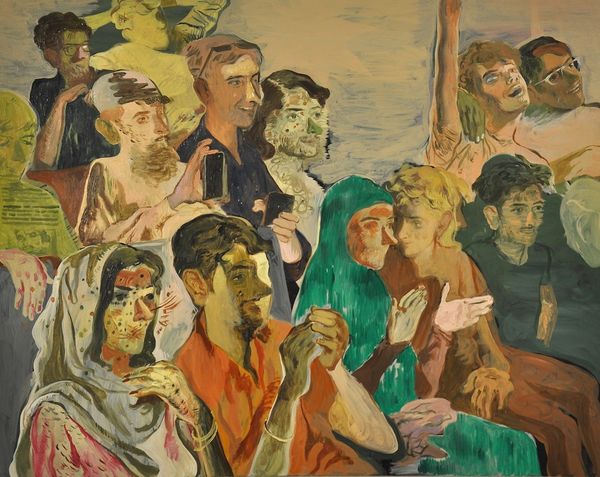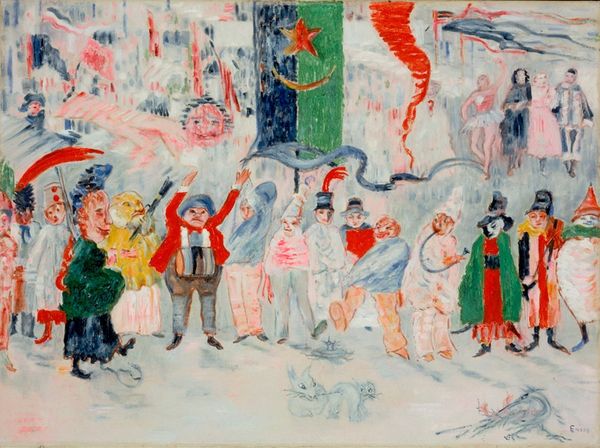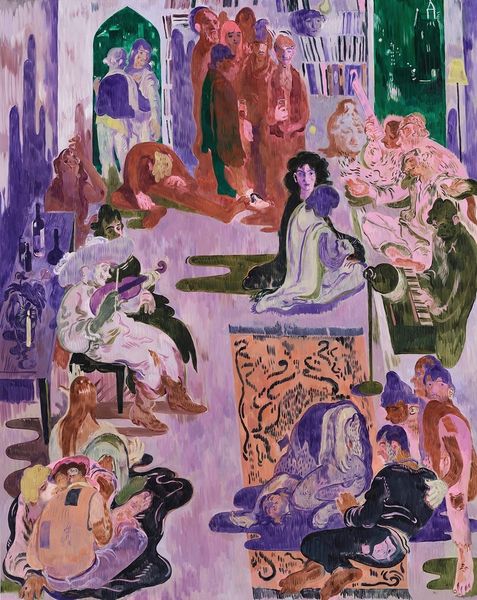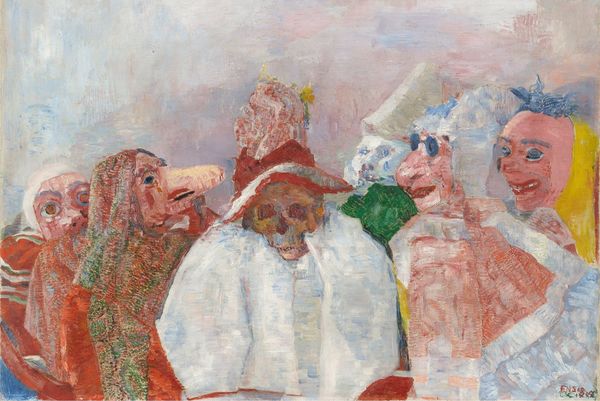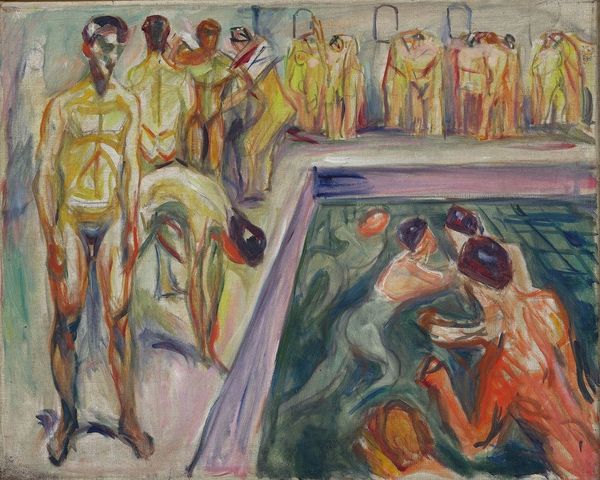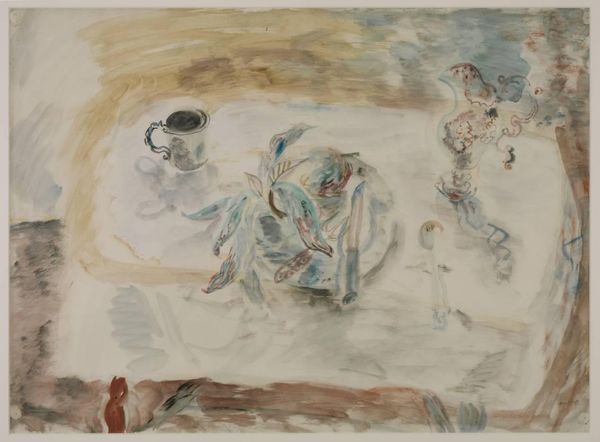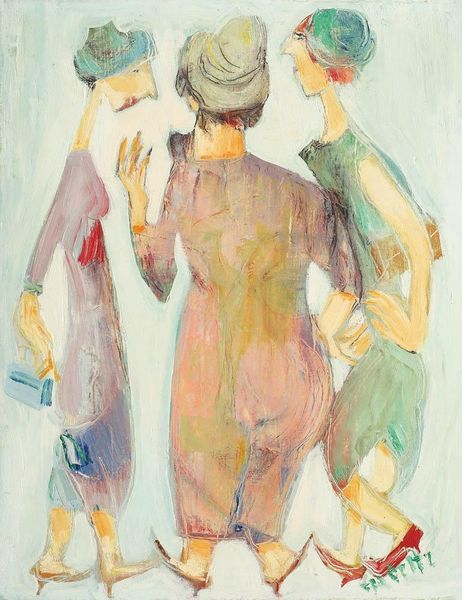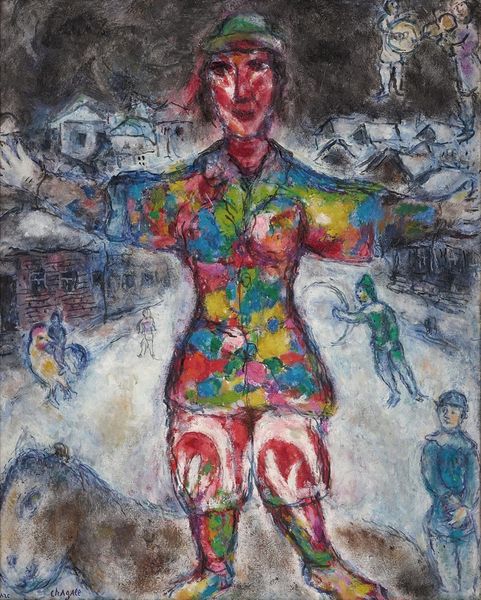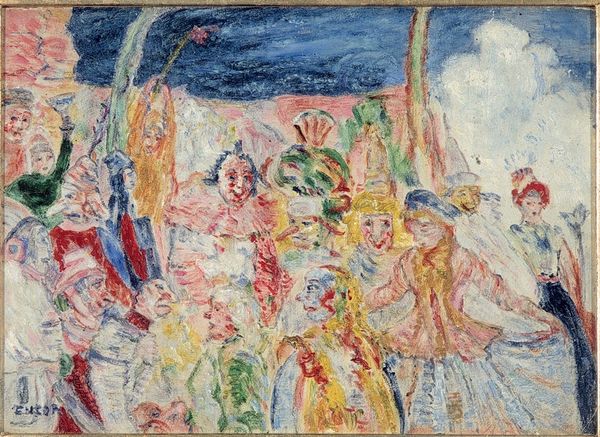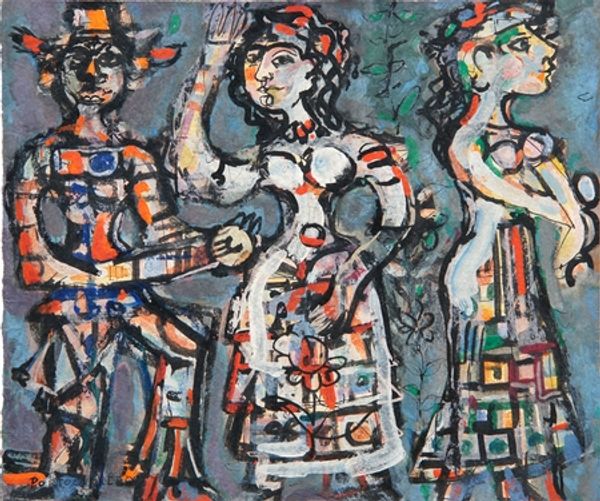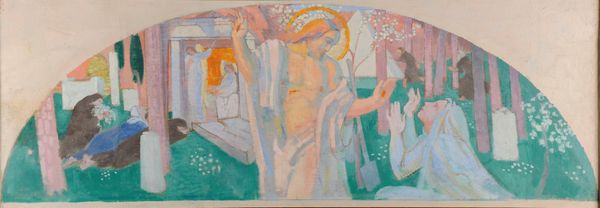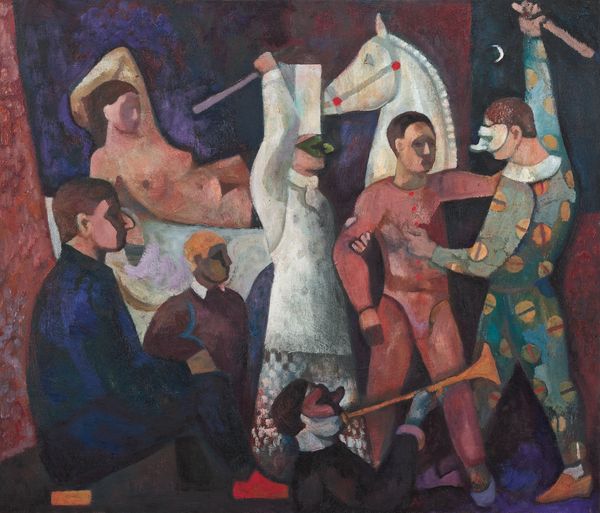
painting, oil-paint, impasto
#
portrait
#
narrative-art
#
painting
#
canvas painting
#
oil-paint
#
kitsch
#
oil painting
#
impasto
#
group-portraits
#
expressionism
#
symbolism
#
academic-art
Copyright: Public domain
Editor: This is James Ensor's "The Despair of Pierrot," painted in 1910. It's an oil on canvas featuring Pierrot surrounded by masked figures. There's something unsettling about the scene; the joy of the carnival seems to mock Pierrot's sadness. How do you interpret this work, especially considering Ensor's focus on masks? Curator: Ensor's use of masks isn't merely aesthetic; it's a powerful commentary on societal roles and the performance of identity. Pierrot, the archetypal sad clown, is confronted by a chorus of grotesque figures. Consider the sociopolitical climate of early 20th-century Belgium: a rapidly changing society grappling with industrialization and class tensions. Could these masks represent the bourgeoisie, hiding behind facades of respectability while reveling in excess? What might Pierrot represent in opposition to this backdrop? Editor: That's a fascinating reading! I was focused on the personal despair, but the masks as a critique of societal hypocrisy makes a lot of sense. The exaggerated features and the almost aggressive joy contrast sharply with Pierrot’s muted sorrow. Curator: Exactly! Ensor uses the visual language of the grotesque to challenge the dominant power structures. Think about the concept of the "carnivalesque," where social hierarchies are temporarily inverted. Is Pierrot’s despair a rejection of this superficial inversion, a longing for genuine connection in a world of performative identities? The masks could therefore signify alienation and how social expectations and constructs can pressure us. How do you perceive his gaze amidst all these faces? Editor: It seems like he's looking inward, almost oblivious to the chaos around him, perhaps indicating the isolating nature of despair in a society obsessed with appearances. I see a contrast of private and collective emotions being juxtaposed. Curator: Precisely. This interplay between individual emotion and social critique is central to Ensor's work. Considering this social and historical context certainly enhances our interpretation. Thank you for considering such a multifaceted approach. Editor: Thank you! Thinking about the socio-political context gives me a completely new perspective on Ensor's intentions. I will certainly try to use similar interpretative approaches.
Comments
No comments
Be the first to comment and join the conversation on the ultimate creative platform.

